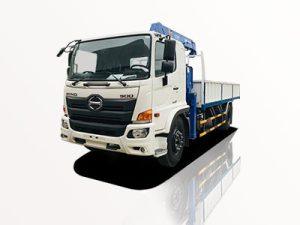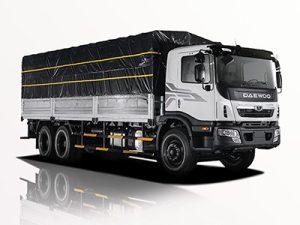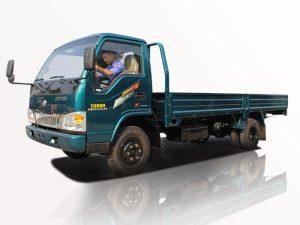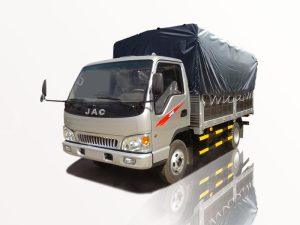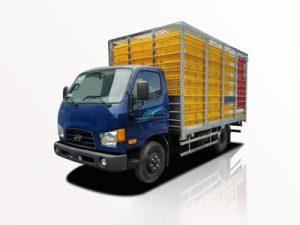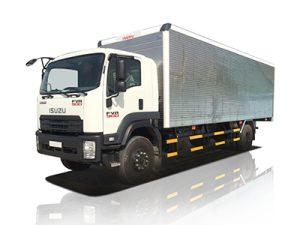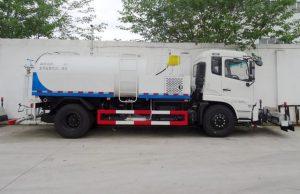Monday to Saturday - 8:00 -17:30
Understanding the Dimensions of a Garbage Truck and Their Impact
Garbage trucks are an essential part of any urban infrastructure, playing a vital role in waste management. The dimensions of these vehicles can greatly influence their efficiency and effectiveness in collecting trash and recyclables. This article will explore the various dimensions of garbage trucks, how they vary by type, and the factors that influence these measurements.
Table of Contents
- 1. Types of Garbage Trucks
- 2. Overview of Garbage Truck Dimensions
- 3. Length Dimensions of Garbage Trucks
- 4. Width Dimensions of Garbage Trucks
- 5. Height Dimensions of Garbage Trucks
- 6. Capacity Considerations
- 7. Turning Radius
- 8. Regulations and Standards
- 9. Practical Examples
- 10. Frequently Asked Questions
1. Types of Garbage Trucks
Garbage trucks come in several types, each designed for specific waste collection tasks. The major types include:
- Front-loaders: Used for commercial waste, these trucks have a fork-like mechanism at the front for lifting bins.
- Rear-loaders: Commonly used in residential areas, these trucks have a compactor and allow waste to be loaded from the back.
- Side-loaders: Equipped with robotic arms, these trucks can pick up bins from the side without requiring a crew to exit the vehicle.
- Roll-off trucks: Designed for transporting large containers or dumpsters, typically used in construction sites or large clean-ups.
2. Overview of Garbage Truck Dimensions
The dimensions of garbage trucks can vary widely based on their type and intended use. Typically, the most significant dimensions to consider include length, width, height, and capacity. Here is an overview:
| Type | Length (ft) | Width (ft) | Height (ft) | Typical Capacity (cubic yards) |
|---|---|---|---|---|
| Front-loader | 22 – 26 | 8 – 10 | 10 – 12 | 3 – 6 |
| Rear-loader | 22 – 30 | 8 – 10 | 10 – 12 | 5 – 10 |
| Side-loader | 22 – 28 | 8 – 10 | 10 – 12 | 4 – 8 |
| Roll-off | 30 – 40 | 8.5 – 10 | 10 – 12 | 10 – 30 |
3. Length Dimensions of Garbage Trucks
The length of a garbage truck varies based on its design and function. Most standard garbage trucks range from 22 to 40 feet. Here are some considerations:
- Front-loaders: Generally shorter due to their primary function of collecting bins from commercial properties.
- Rear-loaders: Slightly longer to accommodate the compaction system and loading area, essential for residential collections.
- Side-loaders: Often similar to rear-loaders but designed to optimize the loading process, potentially allowing for a more extended length.
- Roll-off trucks: Typically the longest, designed for transporting large containers for large-scale waste or debris.
4. Width Dimensions of Garbage Trucks
Width is critical for maneuverability, especially in narrow streets or residential areas. The standard width for most garbage trucks is between 8 to 10 feet. Factors influencing the width include:
- Body Type: Wider trucks may have additional features like larger compaction units or side-loading arms.
- Regulations: Local road regulations may dictate the maximum width for vehicles operating in certain areas.
- Stability: Wider trucks often provide better stability, which is important during lifting operations.
5. Height Dimensions of Garbage Trucks
The height of a garbage truck usually ranges from 10 to 12 feet. Key considerations include:
- Container Height: Roll-off trucks often have a higher total height due to the large containers they carry.
- Compaction Technology: Advanced compaction systems may add extra height to the overall vehicle, impacting clearance in low areas.
- Dumping Mechanisms: Some designs require significant clearance for effective unloading, thus increasing overall height.
6. Capacity Considerations
Capacity is determined by the size of the truck’s container, which often corresponds with the truck’s dimensions. Here are typical capacities:
- Front-loaders: 3 to 6 cubic yards, suitable for small commercial sites.
- Rear-loaders: 5 to 10 cubic yards, ideal for residential curbside collections.
- Side-loaders: 4 to 8 cubic yards, effective for areas with limited labor access.
- Roll-off trucks: 10 to 30 cubic yards, perfect for heavy-duty jobs and large waste removal.
7. Turning Radius
The turning radius of a garbage truck is essential for navigating urban environments. This measurement can impact the truck’s ability to access certain areas. Typical turning radii range between 20 to 30 feet. Key factors influencing turning radius include:
- Wheelbase: Trucks with a longer wheelbase generally have a larger turning radius.
- Type of Drive: All-wheel drive trucks may have different turning characteristics than two-wheel drive models.
- Driver Skill: Operators can often mitigate radius limitations through skilled driving techniques.
8. Regulations and Standards
City and state regulations can impact the dimensions of garbage trucks, particularly in terms of weight limits, safety features, and emissions. Here are a few examples:
- Weight Limits: Heavier trucks may be subject to more restrictions on local roads.
- Environmental Standards: More stringent emissions regulations may affect truck design and dimensions.
- Safety Regulations: Some jurisdictions require additional safety features that can increase overall dimensions.
9. Practical Examples
Consider the following practical scenarios to illustrate how garbage truck dimensions affect operations.
Residential Area Collection
In a densely populated residential neighborhood, a rear-loader garbage truck is often the best choice. With a length of about 27 feet and a capacity of 8 cubic yards, it’s suitable for tight turning areas while still holding a significant amount of waste.
Commercial Waste Management
For commercial waste collection, a front-loader truck is preferred. Its dimensions allow for quick loading and unloading, making it efficient in busy districts. Typically around 24 feet long, it can service multiple sites in a compact area.
Construction Sites
Roll-off trucks are used extensively in construction zones. Due to their length (up to 40 feet) and capacity (up to 30 cubic yards), they can efficiently remove large amounts of debris without needing to make repeated trips.
10. Frequently Asked Questions
What is the average size of a garbage truck?
The average size varies by type but generally falls between 22 to 30 feet in length, 8 to 10 feet in width, and 10 to 12 feet in height.
How much weight can a garbage truck carry?
Typically, garbage trucks can carry between 10,000 to 30,000 pounds, depending on the design and local weight restrictions.
Do garbage trucks vary in size in different cities?
Yes, the size and type of garbage trucks can vary significantly based on local regulations, the nature of the waste to be collected, and urban layout.
How often do garbage trucks need maintenance?
Garbage trucks should undergo a thorough inspection and maintenance check at least once a month to ensure they function properly and comply with safety standards.
What is compaction in garbage trucks?
Compaction refers to the method by which waste is compressed inside the truck’s container, allowing for a larger amount of waste to be stored efficiently.
Can garbage trucks operate in snow and ice?
Yes, many garbage trucks are equipped with features that allow them to operate in snowy or icy conditions, but safety and accessibility will largely depend on local weather conditions.


